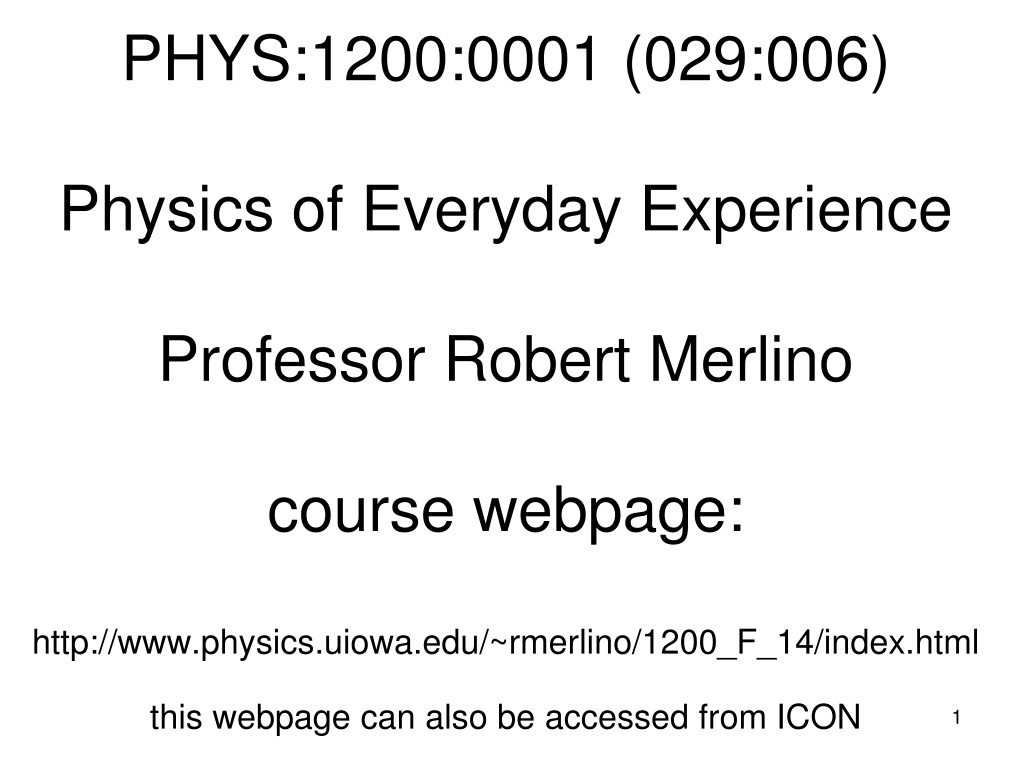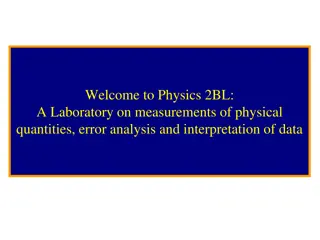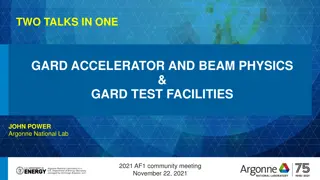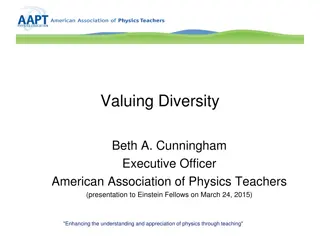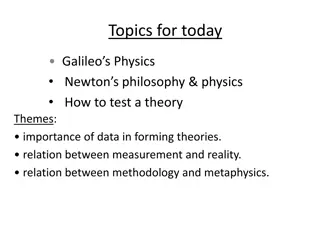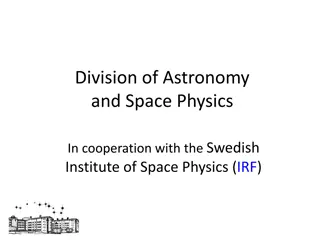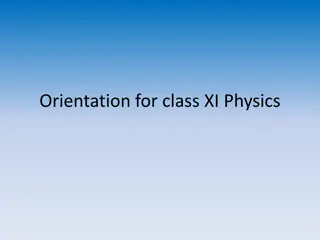Understanding Physics in Everyday Life: Course Overview
Explore the fascinating world of physics through everyday experiences in this course by Professor Robert Merlino. Discover the scientific principles behind common phenomena, from the physics of technology to the mysteries of light, electricity, and more. Develop critical thinking skills, learn basic physics concepts, and appreciate the quantitative nature of physical science. Engage with questions like why things move, how magnets work, and why you sound funny with helium. Dive into the world of physics and uncover the secrets of the universe around us.
Download Presentation

Please find below an Image/Link to download the presentation.
The content on the website is provided AS IS for your information and personal use only. It may not be sold, licensed, or shared on other websites without obtaining consent from the author. Download presentation by click this link. If you encounter any issues during the download, it is possible that the publisher has removed the file from their server.
E N D
Presentation Transcript
PHYS:1200:0001 (029:006) Physics of Everyday Experience Professor Robert Merlino course webpage: http://www.physics.uiowa.edu/~rmerlino/1200_F_14/index.html this webpage can also be accessed from ICON 1
PHYS:1200:0001 The Physics of Everyday Experience Technology plays a big role in everyday life computers, smart phones, GPS, etc. Technological advances result from applications of scientific discoveries In this course we will discover the scientific principles in the everyday experiences and objects around us We will see that we can make sense of what is going on around us in terms of a few basic principles of physics 2
COURSE GOALS To learn some of the basic concepts of physics by observing some of the common phenomena occurring in everyday life To understand the physical concepts behind what makes things work To participate in science by exploiting our natural curiosity To exercise our critical thinking skills To appreciate the quantitative nature of physical science numbers matter! To recall how to deal with simple formulas to obtain numerical solutions to problems 3
SOME OF THE QUESTIONS THAT WE WILL BE DISCUSS IN THIS COURSE Why do things move? Does everything that goes up come down? Why does a bicycle stay upright when it s moving but falls when it stops? What is the physics behind seatbelts? Why doesn t the moon fall into the earth or the earth fall into the Sun? Why is it difficult to walk on ice? Why does ice melt? 4
What is light? What is lightning? What makes rainbows? How can a boat made of steel float? Why do my socks stick to my shirts in the clothes dryer? Why do I get a shock after I walk across the carpet room and touch a doorknob? Why is it a bad idea to plug every appliance into the same outlet? How do magnets work? How does a compass work? 5
How do refrigerators work? Why can t I cool my room by keeping the refrigerator door opened? What is sound? Why do I sound funny when I breath helium? How is electricity produced? What s the difference between DC and AC? What is work and energy? What do airplanes and curveballs have in common? Why do golf balls have dimples? 6
How tall does a mirror need to be to see my entire self? What is the Greenhouse effect, the ozone layer? Is the climate changing? Is it our fault? What s the difference between heat and temperature? What is a day, month, year? Why is a Jupiter year 12 Earth years? How do CAT scans and MRIs work? How do you make an atom bomb? 7
What Physics isnt Art Philosophy Engineering Religion Math Astrology Magic Boring and impossible to understand Done only by mad scientists 8
What is Physics? Physicsis the natural science that involves the study of matter and its motion through space and time, along with the related concepts such as energy and force. More broadly, it is the analysis of nature, conducted in order to understand how the universe behaves, from the largest objects to the smallest. A search for patterns or rules (laws) for the behavior of all physical objects 9
What is the relation of Physics to the other sciences? The attempt to understand the behavior of everything requires more than one field, so various sub-fields have emerged over time: Astronomy Chemistry Biology Geoscience Oceanography Meteorology Atmospheric Science Environmental Science 10
Specialization in Science Physical inanimate objects SCIENCE Biological living things Physics deals with questions at the most fundamental level: What is matter made of? What holds it together? What are its smallest constituents? What are the forces in nature? What is time (Einstein)? 11
The Social Sciences Human behavior cannot be understood on the basis of physical or biological science alone. We cannot understand people simply by studying the behavior of their atoms and molecules The Social Sciences are the disciplines that investigate the social, financial, and political interrelationships among people Sociology Psychology Political science Economics 12
Where do the laws of physics come from? The laws of physics are based on observations (experimentation) We must observe nature to understand it We look for patterns of behavior We quantify these patterns into mathematical statements formulas We continually test these laws to find the limits of their applicability We revise the laws when they fail 13
How can I do well in this course? Download the lecture presentations Pay attention to the demonstrations Go over the lecture presentations Do the review questions and exercises 14
